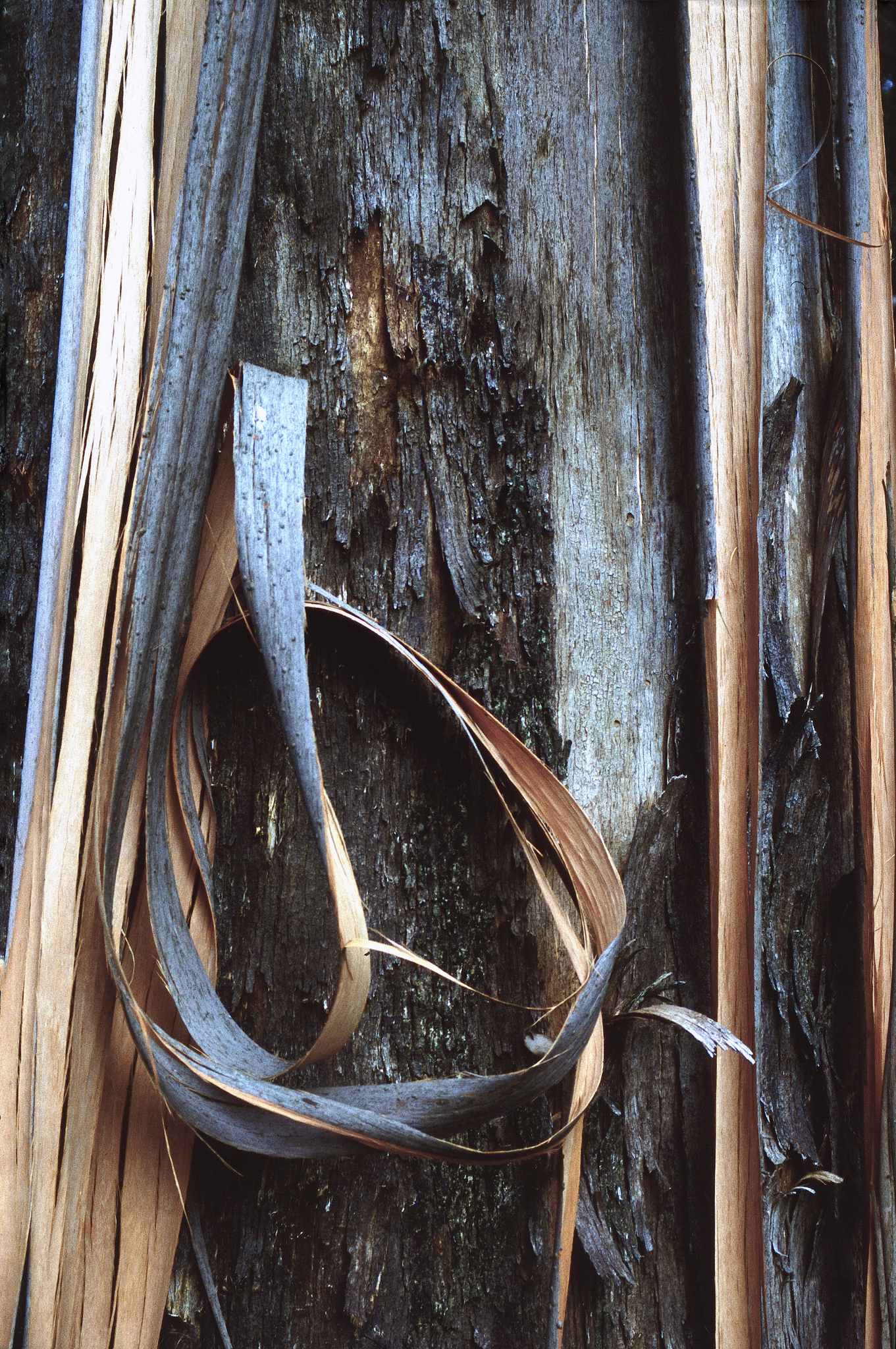
Australia's tallest-growing tree with records showing heights of 100 m or more, but heights of up to 75 m more common. Bark rough at the base of the tree but smooth and white or grey above, peeling in long strips. Adult leaves lanceolate to broadly lanceolate; blade 9-14 cm long, mostly 1.5-3 cm wide, glossy, green. Leaf stalk grooved,12-22 mm long. Flowers creamy white, clusters paired in the leaf axils, each with 9-15 flowers, the common stalk angled; Dec-Apr. Fruits 5-9 mm long, 4-7 mm wide.
This is the world's tallest flowering plant. Various claims to the tallest trees have been made. In Vic at Thorpedale, along McDonalds Track, there is the stump of a tree felled by Mr Cornthwaite on his property in 1884. Officially measured by his brother George, a government surveyor, it is recorded as 114.3 m tall. There is another claim that a tree of 132.58 m was measured by forester W. Ferguson at Watts River, Vic, which, without the growing tip broken off, may have exceeded 150 m. At Mt Baw Baw in 1885 a tree of 143 m was measured. The tallest living specimen is in the Styx Valley, Tas, standing at 95 m. There is another tree over 85 m tall growing at Geeveston, S Tas, off Arve Loop Rd.
Grows naturally, often in single-species stands in open forests of highland Vic and Tas.
Massive height; bark on lower part of trunk, peeling on upper; flower clusters in pairs.
VIC: Korumburra (Public Park); Large wild specimens can be seen at Marysville (Sherbrooke Forest, Cumberland Valley) and Apollo Bay (Big Trees Reserve).TAS: New Norfolk (past South Spur Rd,12 trees to 91 m tall in Big Tree Reserve).
Source: (2002). Eucalyptus. In: . Horticultural Flora of South-eastern Australia. Volume 3. Flowering plants. Dicotyledons. Part 2. The identification of garden and cultivated plants. University of New South Wales Press.
